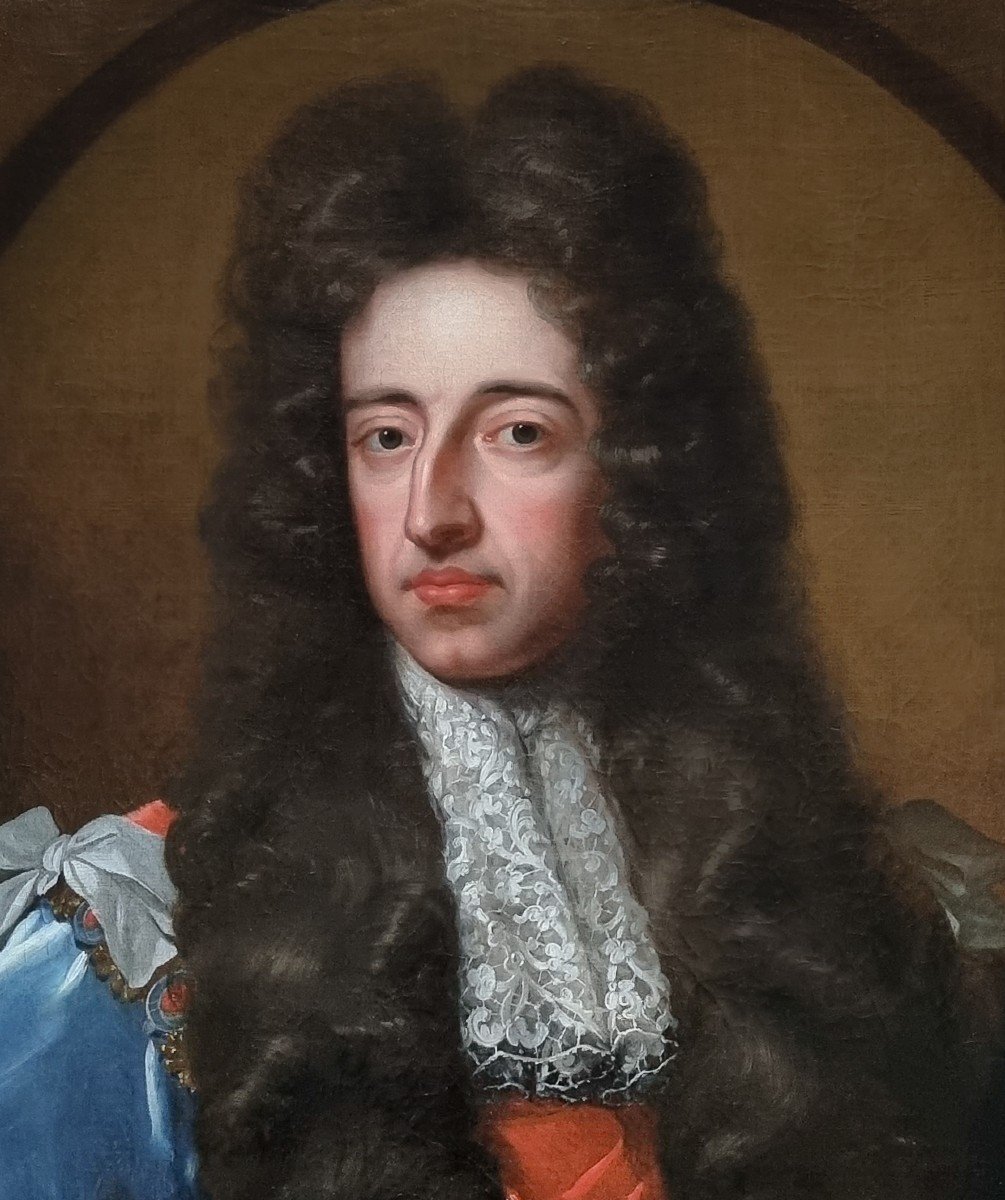"Portrait Of King William III Of England, Ireland And Scotland C.1691; John Riley (1646-1691)"
This exquisite portrait belonged to a collection of artwork and family heirlooms of the Howard family at Greystoke Castle. Greystoke has over one thousand years of history and a long line of respectable Howards who have owned it since the mid 1500s when Thomas Howard, 4th Duke of Norfolk and Earl Marshall of England acquired the castle by marriage. Today, it is in the possession of the fourteenth generation. The portrait is a superb example of English portraiture and is notable for its fine depiction of the garments and the lace. It was painted by John Riley who was one of England’s leading seventeenth century portrait painters and the official painter to King James II, King William and Queen Mary. Held in a marvellous carved and gilded Queen Anne Bolection style frame, an outstanding work of art in itself.This impressive portrait depicts King William III, sovereign Prince of Orange from birth, Stadtholder of Holland, Zeeland, Utrecht, Guelders, and Overijssel in the Dutch Republic from the 1670s and King of England, Ireland, and Scotland from 1689 until his death in 1702. As King of Scotland, he is known as William II.
Painted circa 1691 he wears a red sash and the chain and badge of the Most Noble Order of the Garter – it shows St. George the Martyr on horseback. This order of chivalry, founded by Edward III of England in 1348, is the most senior order of knighthood in the British honours system and is dedicated to Saint George, England's patron saint.
The prime version of this portrait is a full-length portrait of the sitter wearing coronation robes by Sir Godfrey Kneller painted around 1690 (located in the Royal Collection at Windsor Castle; it hung in the Council Chamber at Kensington Palace by 1697). It is the archetypal example of what the royal and princely rulers of Europe required from their court painters and it was replicated many times for British embassies abroad, indicating that it functioned as the official image of the King - the 'State Portrait'. It was customary for the artist and/or studio to produce replicas, often smaller – either three quarter or bust length, such as our portrait, to be dispersed as gifts or to supporters of the realm. They were created to convey authority and, in many instances, formed part of a dynastic heritage to be hung in great halls with other similar grand portraits of their family, predecessors and political allies.
Prince William of Orange (later King William III) was highly important in the politics of Europe. He had been Captain General of the Dutch United Provinces in their war against the armies of Louis XIV and was an important figure to the Protestant cause in England. In 1677, William married his cousin Mary. Mary was the eldest daughter of James, Duke of York, who was the brother of Charles II and heir to the English throne. James and his wife were Catholic and Protestants worried that any son born to the couple would eventually become a Catholic king. The marriage of William and Mary had been encouraged by Charles II, Mary’s uncle and James’s brother, as it raised the prospect of a Protestant heir to the throne.
Charles II died in 1685 and James became King James II and many in Protestant England were deeply suspicious of the new Catholic monarch. When his wife gave birth to a son it confirmed their worst fears of a Catholic succession. This meant that Mary was no longer next in line to the throne. Alarmed by the situation, a group of James's Protestant opponents secretly invited William to invade England and oust his father-in-law. William’s mighty invasion force landed in Devon in November 1688. Many Englishmen supported William and, after some prominent English nobles defected to the invader, James II chose not to fight. He was subsequently captured and then allowed to escape to exile in France.
Early in 1689, the English Parliament formally offered William and Mary the throne as joint monarchs. The new monarchs could not rule with the same power as previous monarchs enjoyed. They accepted Parliament’s ‘Declaration of Rights’ (later called ‘Bill of Rights) which restricted the king’s power and marked an important transition towards the system of parliamentary rule that exists to this day. Later that year James landed in Ireland with French troops supplied by William of Orange’s sworn enemy, Louis XIV. In response William raised a huge invasion force, the largest Ireland had ever seen, and he decisively defeated James at the Battle of the Boyne. In Europe, William was successful in his lifelong struggle to contain the military ambitions of Louis XIV, the Catholic king of France. In part to help finance his wars with Louis, William founded the Bank of England.
John Riley was born in London in 1646. He began practising painting at a young age and was probably independently wealthy at this time. He studied painting under Isaac Fuller and Gerard Soest, but left them to set up his own practice as a portraitist when he was very young. He became a fashionable and very accomplished artist who attained a good practice among the gentry and aristocracy. At the height of his success in the 1680s, Riley charged around £20 for a three-quarter length portrait (described as half-length in the seventeenth century), a considerable amount of money at the time. His work was on a level with, and to some excelled, Sir Peter Lely; Riley’s portraits were unquestionably a better likeness. With more self-confidence Riley could have overtaken Lely in popularity. His influence was far and wide on British portraiture. His recorded pupils were Anthony Russell, Thomas Murray, Edward Gouge, and Jonathan Richardson Senior (1667–1745), who was the leading native-born portrait painter of the first forty years of the 18th century. Richardson married a niece of Riley, and he was himself the master of Thomas Hudson (who was in his turn the master of Sir Joshua Reynolds).
Riley was particularly skilled at rendering the sitter’s heads whilst leaving the draperies to his studio assistants. In about 1681 Riley engaged as his drapery painter John Closterman and later as partner working in conjunction. The formal partnership was dissolved after a couple of years, but Closterman continued to work and to live with Riley, and finished several of his pictures after his death. Riley also employed Lely's drapery painter for ‘postures’, John Baptist Gaspars. He was appointed Principal Painter to the King in 1688. He is known to have a good sense of the character of unpretentious men. Riley died in March 1691, and was buried in the church of St. Botolph, Bishopsgate, London.
The work is held in a fine Queen Anne Bolection style gilded frame – an impressive work of art in itself. This style first came into use during the end of William III (1650-1702) and Mary II's (1662-94) reign and was at the height of fashion during the reign of Queen Anne (1665-1714) and continued through into George I's (1660-1727). It is easily recognised by its gadrooned knull and ornamented sight and back edges.
All of our paintings pass strict quality and condition checks by a professional conservator prior to going on sale. As such they can be hung and enjoyed immediately.
Provenance: The property of the Howard family at Greystoke Castle, Penrith, Cumbria (Greystoke has been in the possession of the Howard’s since the mid 1500’s and fourteen generations)
Measurements: 103 x 82cm framed including presentation plaque (40.5” x 32.25”)



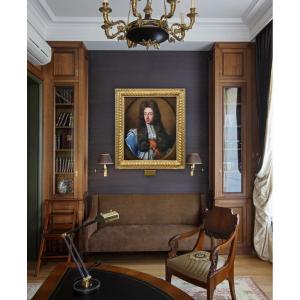

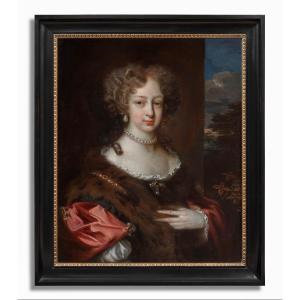
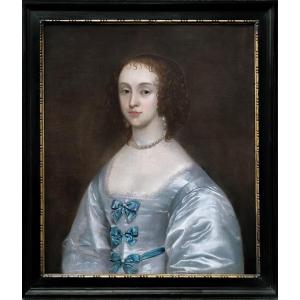


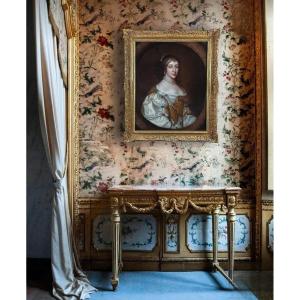
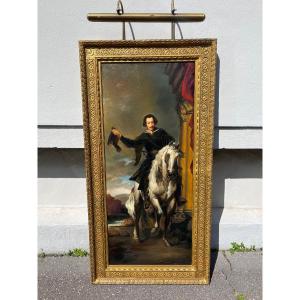

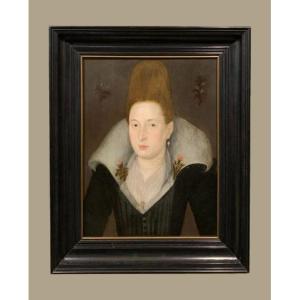

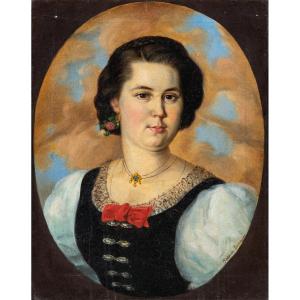





 Le Magazine
Le Magazine Rivista Artiquariato
Rivista Artiquariato TRÉSORS magazine
TRÉSORS magazine





